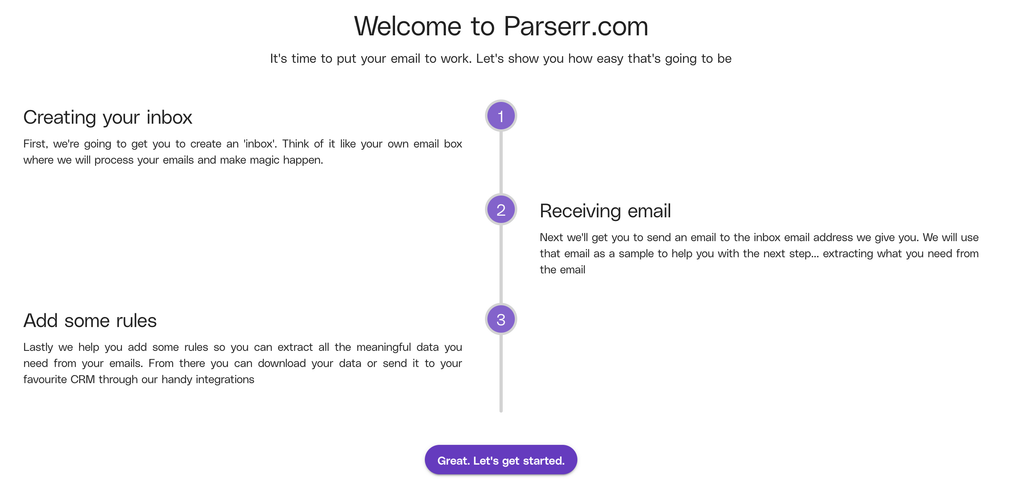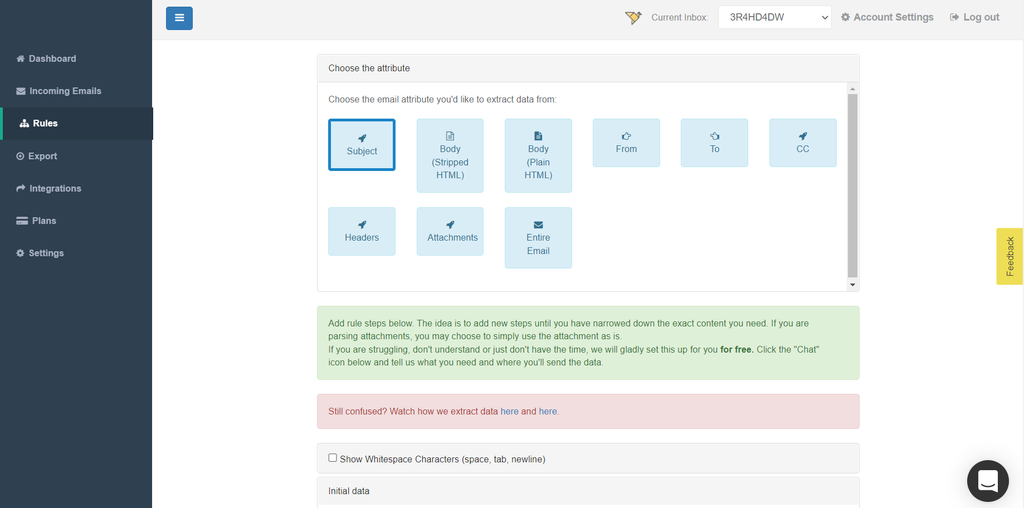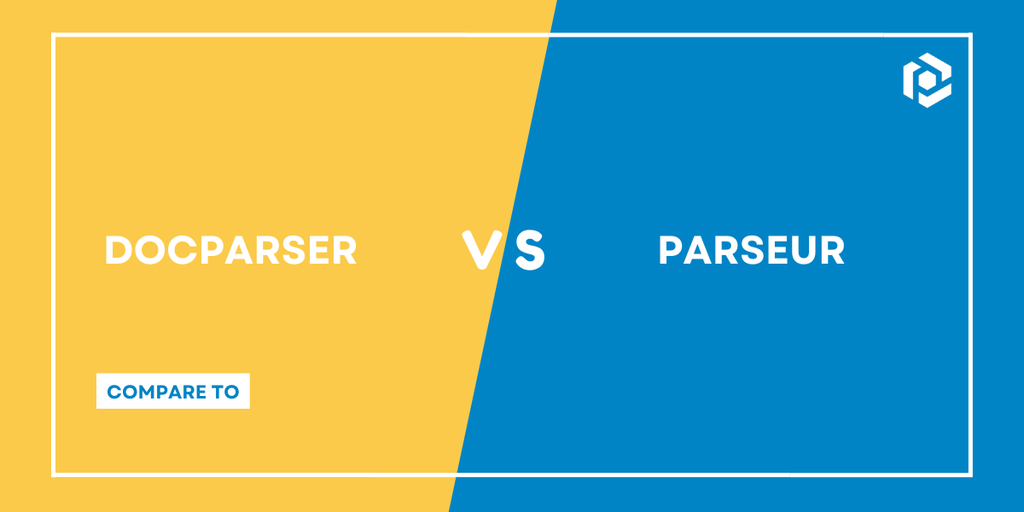Discover why Parseur is the smarter, faster, and more flexible email parser compared to Parserr. With AI-powered extraction, intuitive templates, and zero manual rules required, Parseur helps you automate data from emails, PDFs, and attachments effortlessly, saving time, reducing errors, and giving your team more control over workflows.
Key Takeaways:
- Both Parseur and Parserr can extract data from emails, saving time on manual entry.
- Parseur combines AI-driven parsing with intuitive templates, eliminating the need for manual rules.
- This article breaks down the similarities and differences to help you find the right tool for your business.
Looking for the best Parserr alternative in 2026? You’re in the right place. Many teams start with Parserr to extract data from incoming emails, but quickly run into limitations: complicated rules, inflexible templates, and time-consuming setup.
Parseur offers a smarter way. Our platform combines powerful AI extraction with an easy-to-use interface, with no coding or manual rules required. Whether you’re processing customer inquiries, orders, support emails, or attachments, Parseur automates the entire workflow with speed and accuracy.
In this article, we’ll break down the similarities and differences between Parseur and Parserr, helping you understand why Parseur is the go-to choice for teams who want reliable, scalable, and hassle-free email parsing.
Parseur vs Parserr in a nutshell
The table below summarizes the differences between Parserr and Parseur. Read on for a detailed comparison.
 Parserr |
 Parseur |
|
|---|---|---|
| Engine | Rule-based | AI-based Template-based |
| Email display | Text only | With formatting (like in your email client) |
| Metadata parsing | Yes | Yes |
| Table parsing | Yes, with rules | Yes, auto |
| HTML parsing | No | Yes |
| Automatic parsing | AI with rules | Yes, AI + hundreds of templates supported |
| Multi-layout parsing | No | Yes |
| PDF parsing | Limited (plain text) | Advanced with OCR and AI |
| Scanned PDF (OCR) | No | Yes |
| Integrations | Download Webhook Zapier Google Sheets Salesforce Sharepoint Hubspot Dynamics CRM |
Download Webhook Zapier Google Sheets Power Automate Make |
| Number of mailboxes/models | 10 to 90 | Unlimited |
| API | No | Yes |
How does an email parser work?
In simple terms, an email parsing tool extracts data from emails. For example, if you are a real estate agent who receives countless real estate leads, an email parser can help extract specific information (such as the buyer's name, address, and property details) automatically and send it to a Google spreadsheet.
It helps you save countless hours of manual data entry work while you can focus on other productive tasks.
Emails come in different formats and layouts, and it can take hours to pull data from those, especially if you receive a huge volume of data per day. An email parser is the best solution to save time and be more cost-efficient as well.
How does Parserr work?
Parserr allows you to parse incoming emails using specific parsing rules, which tell the tool which data you want to extract.
Parserr enables users to create an unlimited number of extraction rules per mailbox, enabling highly customized data parsing from forwarded emails.

It takes some minutes before Parserr receives your email.

Since Parserr is rule-based, users must manually define the rules to extract the data they need.
Parsed data can be seamlessly sent to various applications through integrations with Zapier and Microsoft Power Automate, supporting efficient workflow automation.

Parseur main features as an email parser
Parseur is a powerful email parsing solution that also extracts data from emails and documents. The main difference between Parseur and Parserr is that you don't need to create parsing rules.
Parseur now uses advanced AI models to extract the exact information you need, no rules and no coding required. Simply upload or forward your document, highlight the data you want once, and Parseur’s AI automatically learns the pattern and applies it across all similar emails or files. You get a clear, visual view of every field extracted, and the AI adapts as layouts vary, making the setup faster, smarter, and far more flexible than traditional rule-based parsers.
For those who have trouble getting what they want using parsing rules, this is a lifesaver.
Extract tables from emails smoothly
You can easily create a table field by just highlighting the table and creating the columns in just a few clicks. Invoices, for example usually contain tables to display the items, quantities, and prices. Parseur can extract tabular data and repetitive blocks from each invoice instantly.
Accurate HTML email parsing
Imagine seeing your emails in Parseur the same way they show up in your personal inbox? Yes, Parseur receives your emails in their original format; with tables, images, and text---the same layout and formatting. Parseur is compatible with all email providers (Outlook, Gmail, Yahoo).
This streamlines the data extraction process for you as you can better identify the data you want to extract.
API and integration with thousands of applications
- With Parseur, you can convert email to Excel, or directly by downloading data as CSV or JSON. You can also send email data to Google sheets.
- You can create custom integrations via our API or Webhooks. You can also submit documents directly via the API.
- Parseur has native integrations with Zapier, Power Automate, and Make so that you can export parsed data to any application of your choice.
Powerful PDF parser and OCR software
In case you need to extract data from PDFs, then you have the right tool at hand. With its powerful OCR engine, Parseur easily extracts text and tables from PDFs, including scanned PDFs.
Parseur uses state-of-the-art Zonal OCR and Dynamic OCR to capture all the data in a PDF document. If specific data moves horizontally or vertically in a document, Parseur would still be able to extract it correctly.
Other Parseur features
- Post Processing and data formatting: Parseur lets you write advanced post-processing code with Python
- Webpage parsing: you can extract data from a webpage using its URL
- Data normalization: Addresses, for example, are extracted in a consistent format
- Last but definitely not least, Parseur is privacy-conscious and GDPR compliant: Your data is stored on a highly protected server in the EU, and we take great care of our customers' privacy.
A More Reliable, AI-Powered Alternative to Parserr
Choosing the right email parser can significantly impact the efficiency and accuracy of your business workflows. While Parserr offers a rule-based approach, it often requires ongoing maintenance, manual setup, and multiple mailboxes to manage different layouts. Parseur, on the other hand, delivers a faster, smarter, and more flexible solution for 2026 and beyond. With AI-powered extraction, automatic layout detection, seamless table and PDF parsing, and integrations that fit effortlessly into your existing tech stack, Parseur helps teams automate data entry with ease, not complexity.
If you’re looking for a modern, scalable, and genuinely hassle-free alternative to Parserr, Parseur is built to grow with your business. Set it up once, automate everything, and let your team focus on work that actually matters.
Frequently Asked Questions
You may still have a few questions as you compare Parserr and Parseur, especially if you’re considering switching tools or improving your automation workflows. Below, we’ve put together clear, concise answers to the most common questions teams ask when evaluating Parseur. This section will help you understand how Parseur works, what sets it apart, and how it can streamline your email and document processing.
-
What makes Parseur a better alternative to Parserr in 2026?
-
Parseur requires no rules, no coding, and no manual maintenance. Its AI understanding automatically handles multiple email layouts, making document processing faster, more accurate, and dramatically easier than Parserr’s rule-based system.
-
Does Parseur support multiple email layouts in the same mailbox?
-
Yes! Parseur automatically detects layouts and applies the right extraction logic without requiring separate mailboxes or routing rules. Parserr requires one mailbox per layout, which can quickly become challenging to manage.
-
Can Parseur extract data from PDFs and scanned documents?
-
Absolutely. Parseur includes OCR and AI-powered PDF parsing, allowing you to extract text, tables, and repeated data, whether the PDF is native or scanned.
-
Is Parseur GDPR compliant?
-
Yes. Parseur is fully GDPR compliant, with customer data stored securely on EU servers. Privacy and data protection are top priorities.
Last updated on







